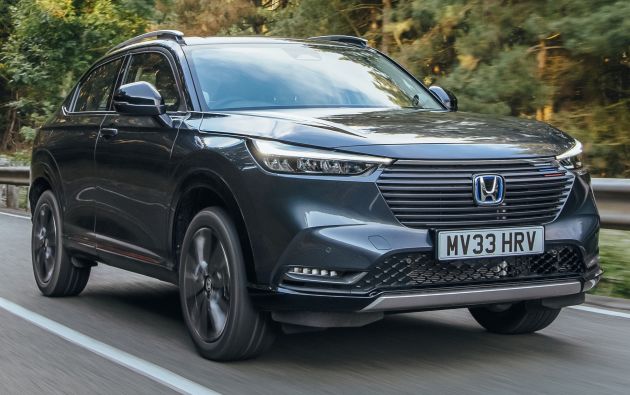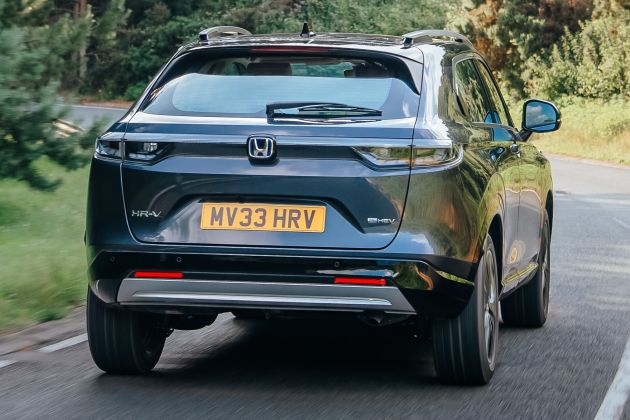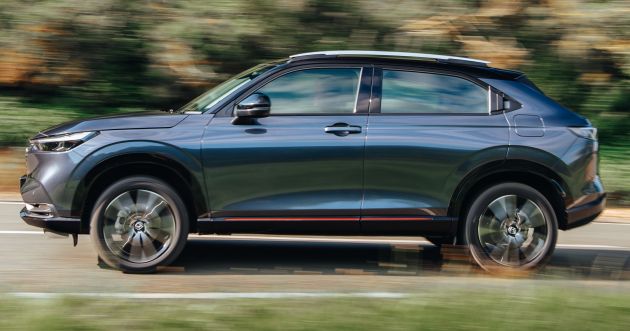Honda is continuing the slow tease of information for the new European-market HR-V ahead of its on-sale date in late 2021. This time, the company has released details on arguably the single most important component of the car – the e:HEV hybrid powertrain, the sole powertrain option in the continent.
As previously reported, the HR-V will mostly be powered by an electric motor, producing 96 kW (131 PS) and 253 Nm of torque. It is assisted by a generator and a 106 PS/127 Nm 1.5 litre Atkinson-cycle i-VTEC four-cylinder engine that juices the motor, as well as taking over propulsion duties at higher speeds. The petrol mill can also charge the lithium-ion battery, which powers the car in electric-only mode.
For the first time, Honda is releasing the zero-to-100 km/h acceleration time for the HR-V – the B-segment SUV completes the century sprint in 10.6 seconds. Fuel consumption is rated at 5.4 litres per 100 km combined on the WLTP cycle, with carbon dioxide emissions of 122 grams per kilometre.
The HR-V’s power unit features a number of improvements over the one in the Jazz and City e:HEV, including revisions to the engine and electric motor and an increased number of battery cells, from 48 to 60. The latter allows for greater storage and deployment of electric power.
Despite the larger cell size, the battery’s reengineering means that interior space has not been compromised, Honda claims. A shorter gear ratio in the single-speed transmission between the electric motor and the wheels also boosts acceleration.
As with the Jazz and City, the HR-V automatically switches between electric, hybrid and engine drive, depending on which is most efficient at a given driving situation. The car also has three drive modes that can be selected by the driver – the Sport setting delivers a sharper throttle response, while Econ dulls the throttle and adjusts the air-conditioning to increase efficiency; Normal provides a balance between both.
While the HR-V already recuperates kinetic energy in normal driving, drivers can also put the gear selector into the “B” position to increase the level of regenerative braking. The strength of the deceleration effect can be adjusted using the paddles on the steering wheel.
Honda says that the e:HEV powertrain is more efficient than the power-split hybrid system used by other companies, most notably Toyota. Its single-speed transmission provides much less resistance compared to a conventional planetary gearbox by minimising gearing, ultimately reducing energy consumption when driving on electric power alone.
The e:HEV system is said to have incorporated learnings from Honda’s race-winning Formula 1 power unit programme, which has contributed greatly to Red Bull Racing challenging for the title this year. It also borrows from more than 20 years of building hybrid cars, starting in 1999 with the original Insight.
Source: Read Full Article



